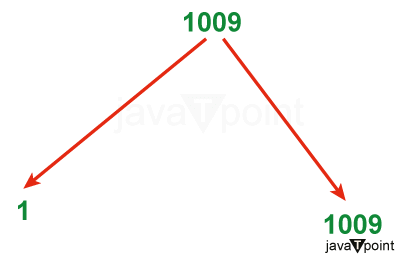Factors of 1009In Mathematics, numbers usually have secrets and patterns that can keep busy the mind of a learner or a professional in the same manner. One such number is 1009, which is a prime number that has kept the mathematician busy for centuries; a prime number can be defined as a number greater than one (> 1) that has no positive divisor other than one (1) and the number itself. So, in this article, we will learn about the concept of Factors and prime numbers and factors of 1009 and understand the properties with the conclusion at the end of the article. What is a Factor?Factors can be defined as numbers that can completely divide a number, so there must be no remainder after the division. If factors of a number are multiplied by one another, the resultant can and cannot be a multiple of the main number. Example: Consider the number - 12 Factors of 12 are 1, 2, 3, 4, 6, and 12; if we multiply any two factors, let's take 2 and 4, 2 and 12. Their product will be 2 x 4 = 8, less than 12 but not a multiple of 12. Their product will be 2 x 12 = 24, greater than 12 but a multiple of 12. Some Important Properties of FactorsIn this paragraph, we will discuss some critical properties of factors:
What is a Prime Number?Before we learn about the number 1009, we will first know about the concept of prime numbers. A Prime number is a natural number greater than one (> 1) that only has two divisors, and these are one (1), and that number itself, and both are positive. Simply putting a number is only divisible by one, and that number itself completely (without any remainder) is called a Prime Number. Prime numbers have an essential role in mathematics, especially in number theory and cryptography; they act as the building blocks for all other natural numbers and play a crucial role in the study of factorization, greatest common divisors (G.C.D), and modular arithmetic (Euclid Theorem). Some examples of prime numbers: 2, 3, 5, 7, … so on. Representation of a Prime NumberThe general formula can represent Prime Numbers in the set builder form. There are two general formulas to represent prime numbers (but 2 and 3 are exceptions to this formula), which are:
Where "x" is a natural number. Example: Let us find the 100th prime number; just put x = 100 in the above formula. 6 (100) + 1 = 601 Example: Let us find the 99th prime number; just put x = 100 in the above formula. 6 (100) - 1 = 599 Understanding 1009: A Prime NumberBefore we find the factors of 1009, let us first establish a basic understanding of 1009 as a prime number. Prime numbers have fascinated mathematicians since ancient times due to their unique properties; as mentioned earlier, a prime number has only two distinct positive divisors: 1 and itself. 1009 is one such number, the 168th prime number in the sequence of prime numbers. Mathematicians first discovered its primality in ancient times, and its importance has been a subject of study and wonder ever since. The Factors of 1009As we explore the factors of 1009, we find that they are limited to just two numbers: 1 and 1009; as we know, this is a characteristic of prime numbers. When we divide 1009 by any other positive integer, we will always get a remainder, and the result will not be a whole number.

The absence of any other factors shows the uniqueness of 1009 as a prime number; prime numbers, in general, play a crucial role in number theory, encryption algorithms, and various other mathematical applications. Mathematical Significance of 1009Despite its status as a prime number, 1009 has some intriguing mathematical properties that are worth exploring: 1. Twin Prime Conjecture The Twin Prime Conjecture is one of the most famous unsolved problems in number theory, and it says that there are infinitely many pairs of prime numbers that are exactly two units apart, i.e., two prime numbers have a difference of 2. For example, the pair (3, 5) fits this conjecture since both 3 and 5 are prime, and the difference between them is 2. As for 1009, it forms a twin prime pair with 1013. Both numbers are prime, and their difference is precisely 4. While this is not direct proof of the Twin Prime Conjecture, it does highlight the fascinating relationships between specific prime numbers. 2. Prime Quadruplet Prime quadruplets are sets of four prime numbers with a fixed difference between consecutive set members. Although rare, they add an extra element of excitement to the study of prime numbers. 1009 is part of a prime quadruplet (1009, 1013, 1019, 1021). The common difference between these consecutive primes is 4. Prime quadruplets are an exciting area of research, and the existence of such sets highlights the interconnectedness and complexity of prime numbers. The Importance of Prime Numbers in MathematicsPrime numbers have so many implications in mathematics and its various applications; some of the roles are discussed as follows:
Conclusion
|
 For Videos Join Our Youtube Channel: Join Now
For Videos Join Our Youtube Channel: Join Now
Feedback
- Send your Feedback to [email protected]
Help Others, Please Share










